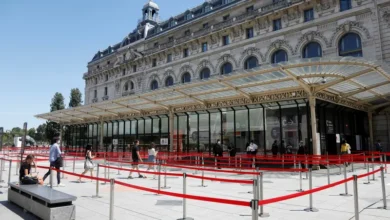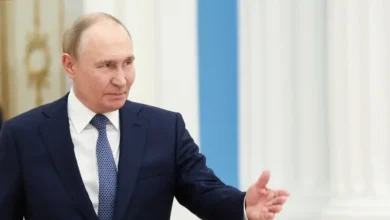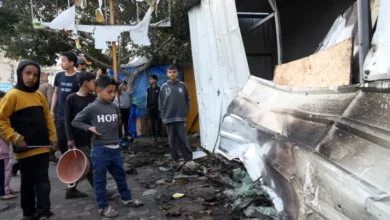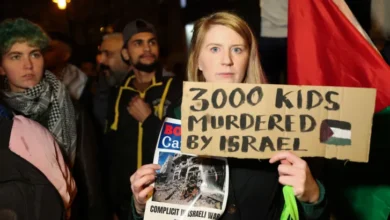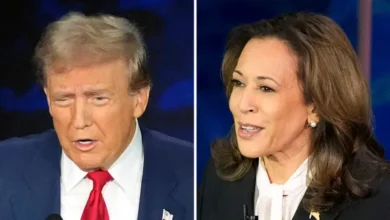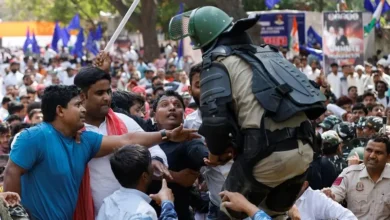Ukraine submits ceasefire plan, but Russia responds with escalation
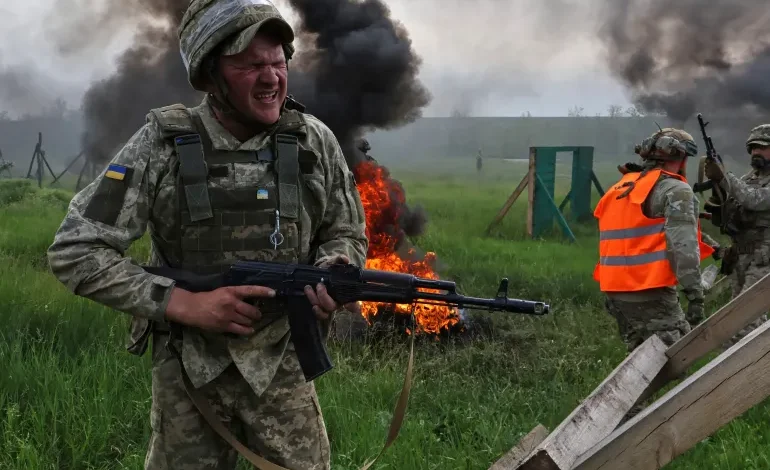
Ukraine and Russia exchanged 1,000 prisoners of war each on Friday, Saturday and Sunday, their largest exchange in the three-year war, following a Russian proposal made during talks in Istanbul on May 16.
But any confidence built by that gesture may have been dissipated by Russia’s launching of its largest long-range aerial attacks against Ukrainian civilians during the same three days.Russia launched more than 900 kamikaze drones and 92 missiles, killing at least 16 civilians. Those attacks followed days of Ukrainian strikes on Russian military infrastructure in Russia’s Tula, Alabuga and Tatarstan regions, in which it used at least 800 drones.
German Foreign Minister Johann Wadephul said on Tuesday that Germany might supply Ukraine with the 1,000km- (620-mile)-range Taurus missiles it has asked for at any time, without warning Russia, strengthening Ukraine’s ability to devastate Russian military factories.
Chancellor Friedrich Merz said he would impose no range limits on the weapons supplied to Ukraine. And on Wednesday, as Ukrainian President Volodymyr Zelenskyy visited Berlin, Merz announced that Germany would help Kyiv to develop long-range missiles of its own.The Kremlin has reacted with alarm. Spokesman Dmitry Peskov said, “If such decisions are made, they will absolutely go against our aspirations to reach a political settlement.” Russia requested a UN Security Council meeting “in connection with the actions of European states trying to prevent a peaceful settlement of the Ukrainian crisis”.
Yet even before the announcements by Germany, the prospect of any “peaceful settlement” had been dealt a blow by the drone and missile exchanges between Moscow and Kyiv.
Unlike Ukraine’s, Russia’s drones landed in cities, lighting up the skyline with exploding apartment buildings.
Ukrainian defenders managed to down 82 percent of the drones, which is lower than their usual rate. Military intelligence sources told The Economist that Russia was flying its drones at an altitude of more than 2km (1.3 miles), out of the range of mobile heavy machinegun units, and had adapted the drones to use Ukraine’s own internet signal for navigation, immunising them from electronic interference.
Russia also pressed on with its ground assaults in eastern Ukraine, and claimed to have captured six settlements in the regions of Sumy, Kharkiv and Donetsk. Russia also expanded a salient near the town of Pokrovsk, its main target this year, in preparation for a wider ground offensive.Even United States President Donald Trump got angry with his Russian counterpart, Vladimir Putin, a man he openly admires.
“Something has happened to him,” Trump wrote on his social media platform, referring to Putin. “He has gone absolutely CRAZY!”
Trump told reporters, “We’re in the middle of talking and he’s shooting rockets into Kyiv and other cities.”
Kremlin spokesman Dmitry Peskov belittled the US president’s reaction, speaking of the “emotional overstrain of everyone”.
The next diplomatic steps
Ukraine has nonetheless stayed the diplomatic course, submitting a memorandum detailing its conditions for a ceasefire on May 27, fulfilling another Russian proposal.
A reciprocal memorandum that Russia is meant to submit had not yet been reported received in Kyiv or Washington by Thursday morning.
Pope Leo XIV had offered the Vatican as a venue for the next round of talks that are to follow this exchange of memorandums, but Lavrov thought it “somewhat inelegant when two Orthodox countries would use a Catholic venue to discuss the root causes of the crisis”, preferring to return to Istanbul.
Russia has insisted on a conditional ceasefire that addresses “the root causes underlying this conflict and how they must be excised like a malignant tumour”. Russia considers Ukraine’s break with the Moscow Patriarchate and the creation of an autocephalous church in Kyiv to be one of those “root causes” of the conflict.Another is the use of the Russian language. Ukraine is a largely bilingual country, but in 2019, it passed a law obliging public servants to use Ukrainian. It did not ban Russian, but Russia calls that discriminatory.
“Ukraine, which lies beyond the constitutional borders of the Russian Federation, is home to millions of people who speak Russian. It is their native language,” Lavrov said at a news conference on May 23, speaking of Ukrainian territory that is outside the Kremlin’s control. “Leaving them to the junta [government in Kyiv], which has banned them from speaking it… would be a crime,” he said. “We cannot allow this to happen under any circumstances.”
Another “root cause”, according to the Kremlin, is the very existence of the Zelenskyy government.
Russia insists Zelenskyy is illegitimate because he has stayed in power beyond his constitutional term, even though the constitution allows him to do so in a time of national crisis, and the Ukrainian parliament has extended his presidency.
Zelenskyy himself offered to resign last February, if that meant Russia pulled back its troops and Ukraine were allowed to join NATO.
That offer was made to the US, not Russia, and Trump ruled out NATO membership for Ukraine in a peace plan he delivered to Kyiv on April 17.
Yet Piotr Lukasiewicz, Poland’s charge d’affaires in Ukraine, told the VOX Ukraine conference on May 24 that Poland supports Ukraine’s accession to NATO and the EU.
He said relations had evolved during the three-year war. “This transformation has led us to a firm conviction that for security reasons, due to economic and political interests, Ukraine should be in the European Union as our partner – political, economic, social. Ukraine should also join NATO. This is our strategic, political, historical and civilizational interest,” Lukasiewicz said.Moscow’s ‘buffer zone
On May 20, during his first visit to Kursk since it was secured from a Ukrainian counter-invasion, Putin held a televised news conference with local officials. One asked him to create a buffer zone in Ukraine’s neighbouring Sumy region. “Sumy must be ours,” he told Putin.The following day, Putin announced that a buffer zone would be created inside Ukraine, an idea he first floated in March last year.
A military expert told the Russian state-owned news agency TASS that Russian troops were advancing along a 15km- (9-mile-)wide front in Sumy to establish that buffer zone.
Days later, former president and deputy head of Russia’s National Security Council Dmitry Medvedev went further. “If military aid to the [Zelenskyy government] continues, the buffer zone could look like this,” he wrote on his Telegram channel, showing a map with almost all of Ukraine shaded.
More sanctions for Russia
When he lashed out against Putin on Sunday, Trump wrote that Russia “deserves full-scale pressure, everything that can be done to limit their military capability”.
But after speaking with Putin on the phone the next day, he refrained from actually attempting to limit that capability through further sanctions, even though the Sunday-to-Monday overnight attacks on Ukraine were bigger and deadlier than the attacks of the day before.
He now faces pressure to introduce sanctions if Putin doesn’t agree to a ceasefire. “If nothing shifts, Russia can expect decisive action from the US Senate. Our bill will isolate Russia and turn it into a trading island,” read a statement from Senators Richard Blumenthal, a Democrat from Connecticut, and Lindsey Graham, a Republican from South Carolina.
Meanwhile, Europe is preparing an 18th package of sanctions against Russia.
Germany’s Foreign Minister Johann Wadephul told public broadcaster ARD on Sunday that those sanctions would come as a response to Russia’s latest attacks on Ukraine’s cities.

